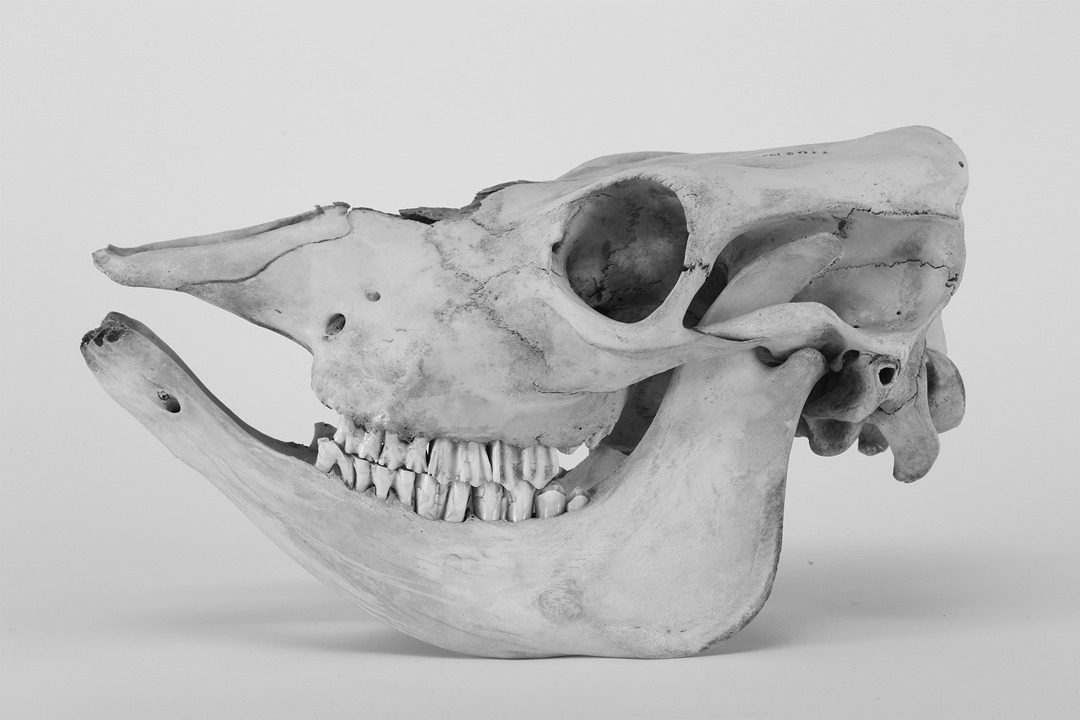DOMESTIC CATTLE*
Bos taurus Linnaeus 1758
Order Artiodactyla : Family Bovidae
*Introduced species
Domestic cattle were introduced into Texas by the early Spanish explorers. Feral populations became so numerous, especially in the southern and western regions of the state, that during post–Civil War times several cattle ranches were established in these regions and were stocked with these feral cattle. These cattle reverted back to a wild phenotype and eventually were considered their own breed (longhorns).
Cattle ranching has been a major Texas industry for three centuries, and cattle may be found all over the state. Some farm areas in the state are not grazed by cattle because the land is exceedingly low in carrying capacity. However, heavy concentrations of stock on more favorable areas in the past have created overstocking. Overgrazing often results in the removal of the original palatable grasses and herbs and their replacement by less desirable vegetation, such as brush species.
The major influence of cattle on wildlife is indirectly through the modification or removal of essential food and cover plants, with all the consequences of this process on soil erosion, flooding, and lessened productiveness. Creek-bottom vegetation is especially attractive and valuable to livestock. Ranchers should adjust stocking rates so that these sensitive areas of special attractiveness are not overgrazed. The improvement of bottomland pastures will permit a marked increase in carrying capacity and better serve the production of cattle today without the detrimental effects of less-well-regulated grazing.
The skull of a cow possesses a pair of permanent horns in both sexes that are not shed annually, as are the antlers of deer. The horns are formed around a bony core arising from the frontal bones. Some breeds, such as the polled cattle, are hornless. Upper incisor teeth and canine teeth are absent.

From The Mammals of Texas, Seventh Edition by David J. Schmidly and Robert D. Bradley, copyright © 1994, 2004, 2016. Courtesy of the University of Texas Press.
Natural Science Research Laboratory
-
Address
Museum of Texas Tech University, 3301 4th street, Lubbock, TX 79409 -
Phone
806.742.2486 -
Email
nsrl.museum@ttu.edu

